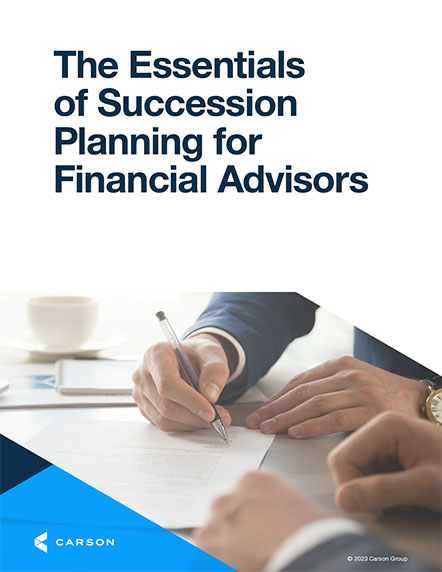If a continuity and succession plan seems like just a “nice to have” for your financial planning or wealth advisory business, think again. A new rule proposed by the Securities and Exchange Commission (SEC) would require advisors to have continuity and succession plans in place.
Proposed SEC ‘Succession Plan’ Rule for Advisors
The SEC proposed a new rule on June 28, 2016, under the Investment Advisors Act of 1940 that would require investment advisors to adopt and implement written continuity and succession plans that explicitly detail how the business and client accounts will be handled if a major disruption to regular operations happens. Clients’ best interests are at the heart of this proposed rule; the goal is to make sure advisory clients aren’t harmed if their advisor is incapacitated or dies.
SEC Chairwoman Mary Jo White said in a statement, “While an advisor may not always be able to prevent significant disruptions to its operations, advance planning and preparation can help mitigate the effects of such disruptions and, in some cases, minimize the likelihood of their occurrence.”
The required plans will need to address continuity of service and/or transition of accounts in the event of:
- Natural disaster
- Cyberattack
- Technology failure
- Personnel departure from the firm
- Advisor or personnel death
- Winding down or stopping services
SEC-registered advisors would be required to review the plan annually, make updates as needed and retain records related to these reviews. They would also be required to retain all continuity and succession plans that had been in effect over the previous five years.
When does the rule take effect?Comments will be received for 60 days after publication in the Federal Register, and can be submitted electronically or via paper. If you are interested in submitting your comments about the rule, you can do so here: |
|
SEC Isn’t the Only Group Regulating Continuity and Succession Plans for Advisors
In April 2015, the North American Securities Administrators Association (NASAA), a group of state securities regulators for financial advice firms of less than $100 million in assets, approved a model regulation that requires continuity plans. However, the impact of this has so far been muted, as each state must adopt its own rule independently.
In the NASAA rule, the plan must detail how the firm will minimize disruption to regular business operations in the event of natural disaster, emergency or death. This covers protecting books and records, establishing alternate communication protocols for clients, office relocation and reassignment of key personnel in times of duress. The rule does allow for flexibility, much as the SEC rule does, based on advisor business size, location and services provided.
Why All the Rules?
Hurricane Sandy’s widespread destruction of many areas in the Northeast U.S. in 2013 was the recent impetus that prompted the NASAA and SEC rules. Many advisory and investment businesses, particularly the smaller offices, faced significant challenges in the wake of Hurricane Sandy. Those without contingency or transition plans had difficulty bouncing back after the storm, and their clients may have paid an unfair price.
This was a wakeup call to organizations like the NASAA and SEC that a lack of contingency and succession planning results in substantial risk to both advisors and clients. As many of us are keenly aware, the aging of the advisor pool has made headlines over the past several years and also served as a wakeup call about the importance of having a succession plan in place.
Advisor Continuity and Succession Plans are Part of Good Client Service
While facing your own mortality and dealing with issues surrounding the thought of leaving the financial planning business you’ve worked hard to build is difficult for many advisors, that doesn’t override the need to face the challenge. With the ever-increasing importance of providing a high-touch client experience and providing value beyond a doubt, contingency and succession plans are business musts for advisors – whether mandated and required by regulatory agencies or not.
If serving your clients is your primary goal, then you owe it to them to have a solid contingency and succession plan in place to address the “what-ifs” that are inherent in life, without the agencies telling you that you must. You owe it to your clients to have a clearly defined answer to what will happen to their investments (and frequently a client’s entire life savings) if you are no longer willing or able to work with them.
That’s just good client service that will set you and your firm apart from the herd of advisors who aren’t addressing the topic.
Do you have a continuity and succession plan in place? How do you feel about the SEC requiring them vs. letting advisors complete on their own? Tweet using the hashtag #BuildMyLegacy to share your thoughts or questions on financial advisor continuity and succession planning and connect with our team.
Interested in talking to a member of our team about the benefits of our Alliance Successions program?
For advisor use only. Not intended for public distribution.



